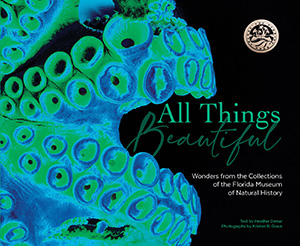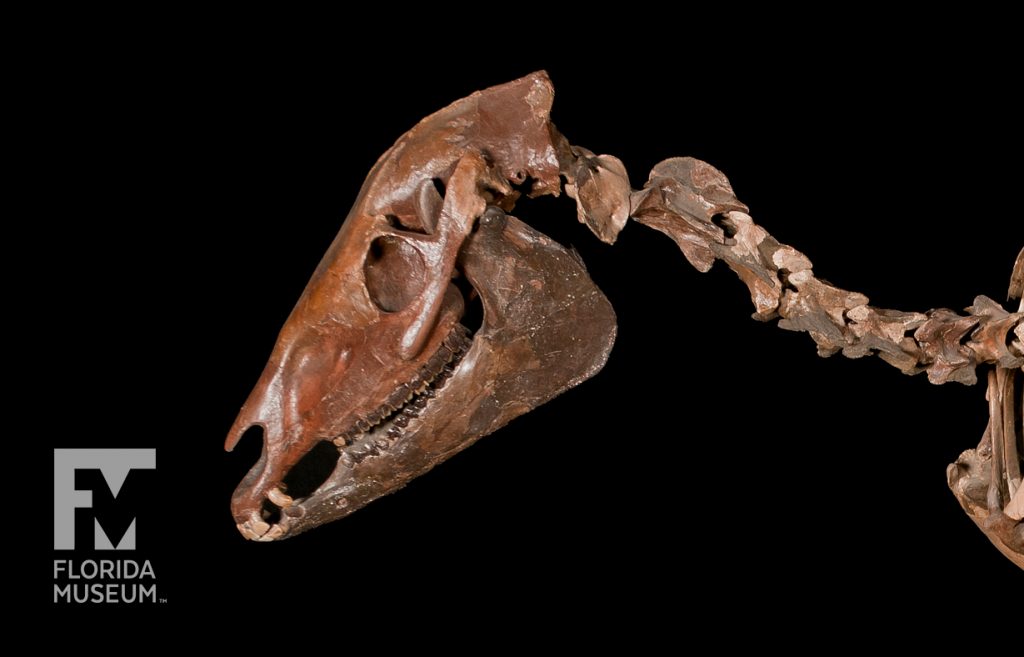This object is on permanent display in the Florida Fossils: Evolution of Life and Land exhibit, located on the center island in the Miocene Epoch.
Summary
Three-toed Transitional Horse (Parahippus leonensis)
From Gilchrist Co., Florida
Lived ~18 million years ago
Collection
Story
So Parahippus is a horse that evolved in North America about 18 million years ago and one of the best examples of Parahippus in all the United States comes from Thomas Farm, a fossil site that’s about an hour northwest of Gainesville.
Parahippus is interesting because based on the shape of its teeth, scientists know that it was what we might call a “transitional feeder,” where it was going from feeding on leaves of trees to horses that initially were feeding on grasses like they do today.
That skull was put back together back about 30 or 35 years ago when I first got here and we had somebody working in an exhibit —he was the exhibit—and he was putting the specimen back together. Bob Allen was his name.
Bruce MacFadden
Curator, Vertebrate Paleontology*
Distinguished Professor*
Florida Museum of Natural History
Exhibit
On display Sept. 23, 2017-Jan. 7, 2018, Rare, Beautiful & Fascinating: 100 Years @FloridaMuseum celebrated the Museum’s rich history. Each Museum collection was asked to contribute its most interesting items and share the stories that make them special. Though the physical exhibit is closed, this companion website remains online, providing an opportunity to experience the Florida Museum’s most treasured specimens.
Exhibit Area: Always on Display
 Want to see more? Explore more than 300 breathtaking color photos of plants, animals, fossils and cultural heritage materials from the Florida Museum of Natural History’s collections in the award-winning book All Things Beautiful available from the University Press of Florida.
Want to see more? Explore more than 300 breathtaking color photos of plants, animals, fossils and cultural heritage materials from the Florida Museum of Natural History’s collections in the award-winning book All Things Beautiful available from the University Press of Florida.
*This title was accurate at the time the exhibit was on display in 2017. Please visit the collection website to verify current staff and student information.

